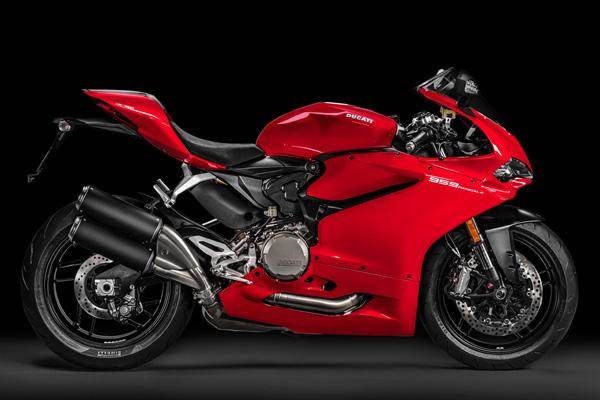1- Baby Panigale? With a 955cc L-Twin motor, it is a little crazy to call this the baby of Ducati’s sport bike range. But the increased engine displacement was necessitated to help meet Euro-IV emissions. Displacement increase is by increasing the stroke, at 60.8mm it's the same as the 1299 Panigale! Power is up to 157hp from 148hp. Torque has increased from 99Nm to 107.4Nm. And, those ungainly exhausts are there to meet the sound emissions. Deal with it.
2- Chassis - The 899’s chassis as with the bigger Panigales was a monocoque design and much appreciated for its sweetness. So much so, that some of its setup was said to have been used for the 1299 Panigale. So, we can’t really complain that the 959 hasn’t been changed dramatically on the chassis front. The only change is the 4mm lower swingarm pivot location which helps get a bit more out of the rubber at the rear.
3 - Missing in Action - The 959 doesn’t get cornering ABS – a feature that we have seen even on the bigger Panigale and the Multistrada. Neither does it get the colour TFT display, instead making do with a LCD. And the 959 also does without electronically adjustable suspension. Weep. However, three rider modes - Race, Sport and Rain; eight-level traction control; Ducati Quick Shifter; and EBC - engine brake control with three levels of adjustability are offered on the baby Panigale. It comes with a slipper clutch as well.
4 Service, Less: The increased torque and maximum power values do not imply shorter service intervals, therefore, valve-clearance inspections are still only required every 24,000km (15,000 miles). General services are required every 12,000km (7,500 miles) or 12 months.
5- Living fast - Ducati insists that the 959 (despite being a new litre class bike, sorry to repeat) is a bike that’s ready to straddle track and streets. Its 810mm seat height (lower than a KTM RC200, yes.) and torquier motor go a long way in building on that claim. At Rs 14.04 lakh ex-showroom, the 959 Panigale sits in a sweetspot of power and price, with the less powerful, less exotic and less expensive Triumph Daytona 675R and the more powerful and more expensive (over Rs 16 lakh) Japanese litre class bikes.
While we will have to wait till we get the 959 Panigale on Indian roads to talk about its everyday usability, we will be testing its race-track cred at the Chang circuit in Buriram, Thailand. Look out for our experience from the saddle of the 959 Panigale shortly.




Comments
Member Login
Personal Details
No comments yet. Be the first to comment.